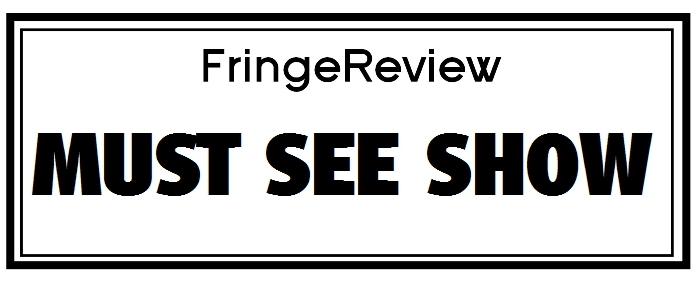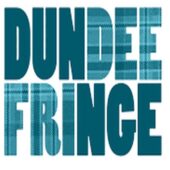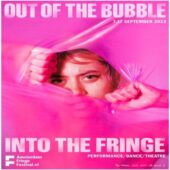Brighton Year-Round 2020
The Winterling
New Venture Theatre, Brighton

Genre: Contemporary, Dark Comedy, Drama, Theatre
Venue: New Venture Theatre Upstairs (Main)
Festival: Brighton Year-Round
Low Down
Directed by Steven O’Shea, with a design team led by Simon Glazier, lit by Strat Mastoris (operation Alex Epps) who also designed the posters, Sound by Ian Black (operated by himself and Erica Fletcher), Costume Design Ian Hollands, Set Dressing led by Delphine Du Barry and the Special Effects Consultant is Deej Johnson. Christine Stubbs is Voice Coach. Stage Manager’s Bryony Weaver.
Review
There’s a hot wire running through Jez Butterworth’s work, ‘something to do with violence and the poor’ as Auden wrote. Add margins both geographical and societal and you can see how killing swine – he’s kept livestock since 2004 – creates that Butterworth paradigm: a sharp-dresser creased in mud.
His 1995 gangster-manqué debut Mojo (which NVT mounted over a decade back) was followed after gone-wrong screenwriting by The Night Heron in 2002, and here The Winterling from 2006, Butterworth’s explicit homage to Pinter. If his next play (Parlour Song, 2008, also NVT May 2015) and the intimate three-hander The River (2012, BLT October 2019) sidestepped from muddy braggadocio to female agency, it returned in Jerusalem (2009) and The Ferryman (2017) – the latter play containing everything of the Butterworth we have.
If his 2002 and 2006 plays received a muted response, critic Michael Billington struggling with Butterworth’s creative identity, it’s clear that to many these plays seemed pigshit to make those roses shine. NVT’s triumphant production under Steven O’Shea proves how wrong this judgement is. For all its explicit homage and wide open pauses – they do drag on a few beats too long – The Winterling is a beautifully-balanced, pristine play with redemption and restitution at its heart. It’s the prototype of Butterworth’s two later masterpieces, the point where he truly comes into his force.
The mood’s punctuated by jet-screams – turning on a significant trig-point – and great sunk silences. Look and feel seep into this production. Directed by Steven O’Shea, with set dressing led by Delphine Du Barry, the design team’s led by Simon Glazier, who create a single-set farmhouse interior with a punctured chair downstage right, and stage-right a makeshift Shabitat kitchen with 1960s mint-green dresser-drawers and hobs that need topping by a Calor-Gas one. Walls are beautifully damp-distressed; a dead-centre stove boasting a remarkable interior blaze resides literally under an axe: a sword of Damocles; and a descending hanger for muddy trousers (is Butterworth mischievously quoting his memorable coup, Silver Johnny hanging upside down by his trouser bottoms in Act Three of Mojo?). Stage left there’s a door, upstage a winningly-observed little porchway through glass. In the Act Two of a year earlier the place briefly looks a sight worse.
That fire’s one of the things lit keenly by Strat Mastoris who also designs the posters. That sometimes splintering sound’s by Ian Black alongside a stereoscope of lamb-bleats that elicits sniggers for being so present, with special effects consultant Deej Johnson. Ian Hollands’ costume design relishes the mix of rural and city.
Jonathan Howlett’s West is interrupted. Ne’er-do-well Draycott (Mark Lester) is apparently the man who leased this fugitive Londoner this Dartmoor cottage though in fact we learn he doesn’t own it at all. He has less agency that when we next meet him a year earlier when West arrives haggard, almost speechless and very different. Howlett’s register of both states is masterly. Lester scores a tour-de-farce with one of Butterworth’s great sidelong speeches which has nothing to do but establish how Draycott can menace shopkeepers into giving him food and even money to ‘just fuck off’ as one baker does. His mode of protection is simply adding mad in a full shop. And his cooking – no butter, spit on it – to a turn, then realizing he’s burned the pig’s heart – is a culinary triumph.
West has fled for a reason that becomes clear when two men turn up, one Stuart Curlett’s Wally, from his past; another, Patsy (Thomas Hobart) the son of ‘that Rita’ whom West dimly knew. No-one just apparates from the Smoke. Wally has a proposition. That doesn’t come till much later, and it so happens he’s duplicated it. Neither, surreally, meet Draycott. They do though meet someone we first meet a year earlier (thus later!) who refuses to talk to Draycott. But at the end of Act One and the interval, it’s Patsy who asks about that girl upstairs. Who?
Curlett’s Wally is a curiously banter-born enforcer, Curlett’s lightness of tone and mode almost working against type, which works beautifully. How can this office-worker demeanour presage what it seems to? Both visitors treat West with a respect due to one who was once pre-eminent, but after five days not allowed any sleep watching from a car without relief, he fell asleep. Retribution was terrible. West has retreated.
There’s all sorts of hints as to what to do with talkative Patsy, first sent on a wild errand to the mud-sunk car to retrieve Wally’s cigs. As if he hasn’t several packets on him. Duetting between Wally and West inscribes past camaraderie; later on Wally has a private proposal.
The Q&A on the Iron Age fort visited on Patsy when he returns – did he access the talking lady? – is a Joycean comic highpoint like an initiation test, but at the same time establishes a defining alliance. Hobart plays Patsy’s slightly gormless but quick youth with a winning mix. With Hobart Patsy’s someone who grasps essentials and details though enjoys showing it a bit too much. Patsy’s talkativeness – which irritates not a few in London – masks shrewdness. Details Patsy and West throw at each other are dizzyingly farcical, but fascinating. It’s only Wally who doesn’t even see the fort. It’s as if to see it ushers you to an invisible community. All four other characters are drawn to it, one dreams of seeing another there, frozen. For there’s someone we’ve not met.
It’s this circling act of recognition Butterworth frames so exquisitely. West, Draycott and Lue assert they’ve been glimpsing each other for long before they meet. As in Act Two Charlotte Hesks’ reticent Lue appears, refusing to speak to Draycott (‘most other people have a sweet side. He hasn’t’ she asserts). And his battery of insults at her underscore this.
Lue’s assertions that she needs ‘a businessman’ to sign her passport photo – isn’t West in business? – have a point. Lue wants out of Dartmoor. Hesks brings out vulnerable sullen underpinned by an exceedingly sharp mind with naïve corners – Lue’s horizons have been crimped. Again a litany of knowledge – here, a passport form – acts like a passport, when really discussing something else.
There’s always some Pinteresque reason Lue can’t escape, not the dog she gives West for helping her a year ago. That’s the Winterling dog run off at the opening and whom West’s waiting the return of at the end. Amongst other things.
Now, back in the present with all introduced and Wally waiting outside, there’s a broken buckle on Lue’s suitcase that means she can’t leave. Patsy can repair it. And they’d spotted each other too. Partly in dream. This is where the fort itself, that trig point split by noise, becomes something other, a test of belonging.
The denouement’s deeply satisfying, raising questions and a paradigm. Butterworth’s heroes conjure final confrontations accompanied with unknowable forces: thundering ancient gods, banshees. Here there’s just something liminal, ancient, slighted but enduring. And West like his name has a home. With Howlett West’s different selves narrow superbly to one intent stare.
NVT’s production is a triumph. Nearly flawless, it must be seen by anyone interested in contemporary drama.

































